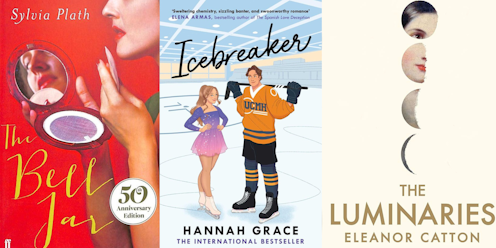Explicit novel Icebreaker is under fire for its ‘misleading’ cover. A book designer explains – and reveals how covers work
- Written by Jenny Grigg, Senior Lecturer, Design and Social Context, RMIT University

Primary school students have been reading TikTok sensation Icebreaker, an enemies-to-lovers romance about a figure skater and an ice hockey player. The cartoon cover features a ponytailed girl (who looks to be in her tweens) in a sparkly purple costume, smiling up at a much taller boy holding a hockey stick.
But the content is “very, very explicit”, an unsuspecting parent, who gave the book to her ten-year-old stepdaughter, told the Age.





